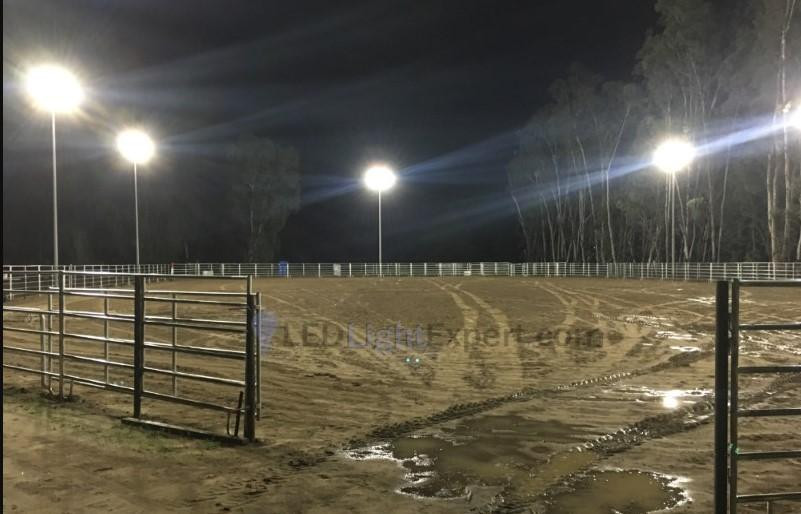Outdoor Pole Lights: Everything You Need to Know
LED lighting is soon the most effective solution for a large variant of market lighting applications.
The variables are simple and clear:
LEDs are by far the most energy-efficient light in the market. They have the longest life span (and associated product warranties) by 2-10 times over nearby completing technologies. They provide excessively costly quality light with a wide range of products and services.
They are small, steady-state lights, which means they do not have the splitting or recycling issues that traditional lights have. The only disadvantage is that they aren't the most cost-effective light on the market. However, the cost will continue to fall. A discerning investor will see that a life expectancy that might be an order of magnitude (10 times) greater than a typical bulb is usually worth the financial investment. The type and specifications of the lights in your parking lot usually set the tone for safety and security and professionalism, and trust in the building as a whole.
This fundamental property is referred to as lighting high quality. Second, parking lot lights are often used from nightfall until dawn; they must be as energy-efficient as feasible.
First and foremost, extending the life of light bulbs is critical since paying personnel and retaining workers 24 hours a day, seven days a week, to change bulbs on a regular basis may become an exceedingly costly event. When choosing a lighting choice, it's critical to strike the right balance of large capacity, long life expectancy, and good quality for these three reasons. Office Lighting, for example, has a wide range of Explosion-Proof Lights and Power Circulation items.
LED lights are the 21st century's answer to a slew of problems.
Quality of the lights:
Oregon just became the third state in the United States to legalize cannabis for recreational use. It joins Colorado and Washington and a growing number of states proposing similar legislation. Aside from recreational marijuana, a few states and the District of Columbia have chosen to allow marijuana for medical use in some form or another. Have you ever thought to yourself, "What's a wonderful strategy to grow the plan in-house?" now that the pattern is firmly in the legalization camp?
Cannabis Grow Lighting Options
When it comes to choosing the correct lighting for growing plants in your home (whether it's marijuana or a simple houseplant), there are two extremely important factors to consider:
The amount of white light emitted by the unique light you're using to grow it and the light requirements of the specific plant you're trying to cultivate.
Here's some background on why this particular type of light is so important:
All Electromagnetic Radiation Doesn't Work for Photosynthesis:
Trees are merely conscious of particular sorts of electromagnetic radiation, much like the human eye. Plants use visible light and ultraviolet light to ensure that they can swiftly carry out the process of photosynthesis.
Expansion lights that are the worst:
In most cases, incandescent lights are bad for growing indoor pots since a large portion of the energy produced is thermal (warmth) rather than visible light. They're OK for low-light pots, but they're bad for pots that require a lot of light. You're better off with a different option unless you're attempting to barbeque your houseplants.
Lights made of halogen:
This is a type of incandescent lighting that produces a lot of heat. In the light, inert gas is used; you might remember some of these gases from science class (bromine, chlorine, fluorine, iodine, or astatine). Halogen lights are commonly used as floodlights in electric motorcycles and clinical settings; however, they aren't always the best choice for growing cannabis.
Motion sensor light is the most effective.
Because LED lights emit less heat, they are ideal for growing cannabis "they are extremely energy-efficient, simple to use and set up, and can be utilized for the whole life of your cannabis plants. In comparison to fluorescent lights, LEDs produce more light per watt. This also implies that they function correctly, reducing the need for light and the risk of fire in your expandable space. The majority of LED expand lights have tiny home appliances built in to act as coolants, and they seldom require additional cooling unless in rare circumstances. They also don't require ballasts, which is an added bonus. On average, they also yield better returns for modest quantities of power taken in."
So now you have that as well: a slew of persuasive reasons led light fixtures might be the cannabis industry's future. Certain LEDs may be the lighting solution of the future for anybody looking for energy-efficient lightings, such as municipalities, real estate businesses, flat and business owners, and so on.
Source Of URL:-https://ledlightexpertcom.wordpress.com/2022/03/07/outdoor-pole-lights-everything-you-need-to-know/
For More Info:-battery back up lights

Comments
Post a Comment